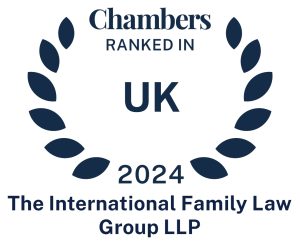The statistics produced annually by the ONS give a snapshot of the trends in relationships and families in the UK.
There are often stark and sometimes shocking – seeming statistics provided annually, but the underlying trends are of greater significance for advisers.
There has been a trend away from marriage since the 1960 and since then statistics indicate:
- Fewer couples are marrying
- Significantly increased levels of cohabitation
- Increasing numbers of children being born outside marriage (in the 1960s it was just 5% of births and today its almost half*)
- Increasing divorce rates in recent decades
- Dissolutions of civil partnerships for same sex couples are up 53% since 2012**
- The first five to ten years of marriage remain the most vulnerable for divorce
- Second or third marriages experience higher rates of divorce, which together with the trend listed immediately above, is possibly why the most common age to divorce is between 45 and 49**
Sources: *“Response to DWP Family Stability Review Invitation to contribute to the review of evidence Harry Benson, Marriage Foundation January 2014” and **ONS 2019
Owing to the potential significant detriment caused to a family’s wealth upon separation or divorce, it’s important for families and their professional advisers to start thinking about the changing structures of families when making future financial plans for families and their wealth protection.
With changes to traditional family structures and their roles comes an impact on their legal rights. This brings consequent risks or benefits to various members of a family about which professional advisers and family members should be aware. Some of these factors will be obvious, but some perhaps less so.
Modern families are:
- Marrying later in life
- Not marrying at all
- Marrying more than once, often with children from a former relationship
- Travelling abroad more for work and leisure
- Experiencing increasingly blended roles of parents between childcare and work
- Experiencing a greater reliance on parents’ wealth to set up homes
- Having increasingly different types of relationships and families
- Experiencing increasing ways to make families
- Utilising social media and IT far more within families
These changes to less traditional families and their roles, impact legal rights and bring consequent risks or benefits to various members of a family. Some will be obvious, but some perhaps less so.
Why does this matter for families based in England or their professional advisers?
Many individuals, both here and abroad remain unaware that certain categories of assets could be shared upon divorce, but in England many of those types of assets which many think would be absolutely excluded from division, can be utilised to settle finances upon divorce. This table summarises some of the risks.
Compared to other countries, England remains comparatively generous in its awards towards the weaker financial party.
This table shows in very broad terms how categories of assets are considered upon divorce in England and Wales (without a marital agreement).
|
Category of asset |
Taken into account in England | Income deriving from this source | |
|
Inheritance / lifetime gifts |
Potentially | Potentially | |
|
Pre-acquired Potentially |
Potentially | ||
|
Family trust Potentially |
Potentially | ||
|
Post-separation Less likely (might depend how financed) |
Potentially, if there is an ongoing |
Growth during Yes |
Potentially |
|
Values of shares in company |
Yes (unless fall firmly in first four categories; then its potentially) | Potentially and more likely if main source of family income post-separation | |
|
Pensions |
Yes (unless fall firmly into pre or post-separation Potentially (if already retired and is main source of income) | ||
| Yes (usually regardless of contributions and possibly source of contribution) | Yes |
What sorts of things should advisers consider about each of the trends and vulnerability of the categories of assets referenced above?
When couples marry later
There is increased scope for inherited or IHT planned transfers during marriage to be intermingled into marital assets (e.g. to upsize a home) and it comes as a huge shock to many when its realised some of those monies from your extended family could go to the other spouse upon divorce soon afterwards (with the other spouses future inheritances often being left intact).
Not marrying at all
Whilst this is potentially better for the wealthier party, it is potentially far worse for the weaker financial party. (There is no such thing as common law marriage in England). This is a common myth amongst cohabitees in England. But be aware in other countries there can be additional rights, sometimes akin to marriage.
Travelling more for work and leisure means the legal rights in the event of divorce or separation, possibly carefully planned for prior to a move abroad or even throughout UK, might need significant review.
There is also an increased likelihood of couples having international families.
With international families come potentially more options for where to divorce to achieve the best outcome. Sometimes where two EU countries are involved it is literally a race to issue first to secure your choice. (Although this might change if we have a no deal Brexit or after any transition period if we leave the EU with a deal).
As indicated above the status of their relationship might alter as they cross international borders e.g. same sex marriages or civil partnerships might not be legally recognised in other countries, or not in the same way, and cohabitants leaving England might sometimes gain ‘de-facto married’ status when they move abroad.
Movement of families across borders can also impact where children will live and how they are supported financially. In almost all countries, no parent can cross an international border with children unless they have the other parents’ consent to do so or a court order.
More second and third time marriages
This means a greater need to protect pre-marital wealth. Whereas, with younger, first time couples, the parents worry about asset protection, for any subsequent marriages its often the children from former relationships who have those concerns.
In addition to sometimes difficult new dynamics when families combine, stepfamilies and the financial responsibilities for stepchildren can sometimes remain even after divorce or separation.
Increasingly blended roles between childcare and work.
More women are becoming the primary earner, consequently being required to provide maintenance and capital to their financially dependent husbands upon divorce.
The blending of the ‘traditional’ family roles also means there needs to be greater consideration given to where the children reside if the couple separate. This means an increasing number of shared arrangements orders, but also means more children are likely to reside primarily with their father.
More types of relationships
Same sex families are growing, aided by increased advances in embryology. Some couples are having gender neutral relationships and polyamorous relationships are increasing.
The laws surrounding relationships and their consequent legal rights, financial commitments and child arrangements upon separation are therefore evolving.
Will polyamorous relationships mean there are in effect more than two parents with all sharing equal parental responsibilities and each requiring financial assistance upon separation as well as a say in the children of the family’s lives?
Recently a man who transitioned from a woman gave birth (retaining his womb for conception but fully transitioning to a man by the time the child was born). In England the person who gives birth is unequivocally known as the mother, but he wanted to be known as the legal father. However, under current laws he could not be known legally as the child’s father.
Increasing ways to make families
IVF technology, adoption and surrogacy all bring additional legal minefields as to who gains rights both parental and financial.
Increased use of social media and IT
Something many people forget is that social media provides evidence in many family matters, including location services.
It is also now fundamental to all modern families, whether its organising their time, child arrangements or finances
It has in some ways enhanced families’ communications and can help retain long distance relationships.
However, with this medium comes increased concerns about security and the need for awareness of sharing data too widely. The physiological signals you receive when speaking in person or even by telephone are wholly absent. Our approach to how we trust others online therefore also needs to adapt.
With these trends in mind, how might family assets be protected:
- By considering marital agreements which remain helpful when citing categories of assets to share upon divorce and they can sometimes include choice of law clauses
- If there is generational wealth or there are trust monies for distribution, by taking care about how any monies are paid to a beneficiary (including lifetime advances) and for what purpose. Letters of wishes to fully explain the intentions behind such of payments can be helpful
- By third parties considering making formal loans for the purchase of any marital assets, particularly a family home
- By discouraging the sharing of personal passwords with partners
- By considering whether to include terms for what happens upon divorce in a family business, shareholders agreement or a family charter
- By obtaining legal advice whenever the couple are thinking of moving to another country – in the current and future country
- By obtaining legal advice about each party’s potential legal rights, before embarking on having a family involving a third party (biologically or otherwise)
- By taking legal advice early on if a relationship feels like it is in trouble
Conclusion
The law always takes time to catch up with social changes, but it gradually develops according to them.
For now, advisers and family members need to be conscious of these trends and the potential consequences when planning for succession of wealth or protecting an existing family’s wealth. The days of assuming a traditional family will be the only route for consideration when planning future wealth can no longer be relied upon.
Lucy Greenwood is a Partner at The International Family Law Group LLP and a founding member of Beacon Gainer.
Lucy Greenwood
[email protected]
The International Family Law Group LLP
www.iflg.uk.com
© October 2019
-
Lucy Greenwoodhttps://iflg.uk.com/team/lucy-greenwood
-
Lucy Greenwoodhttps://iflg.uk.com/team/lucy-greenwood
-
Lucy Greenwoodhttps://iflg.uk.com/team/lucy-greenwood
-
Lucy Greenwoodhttps://iflg.uk.com/team/lucy-greenwood









